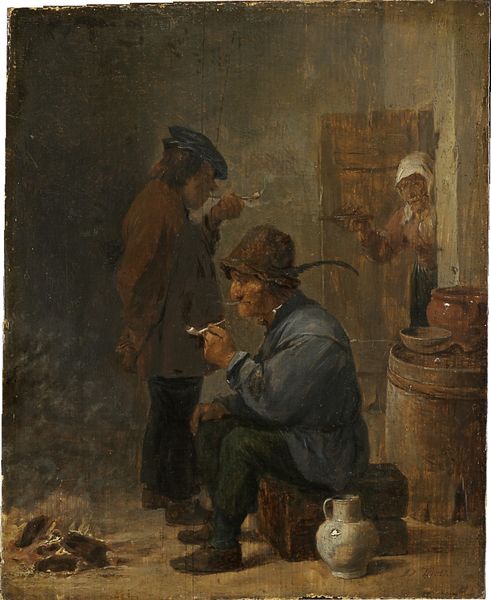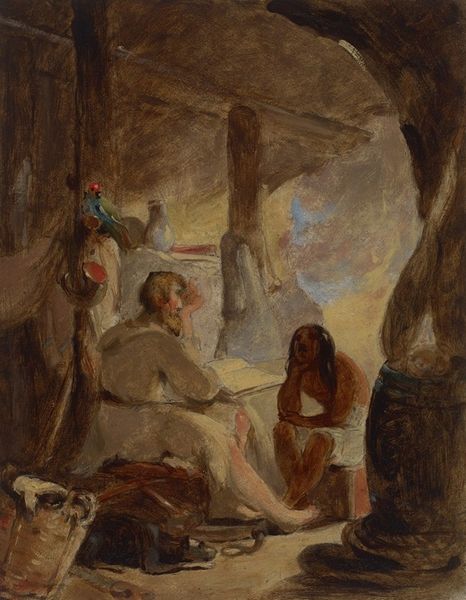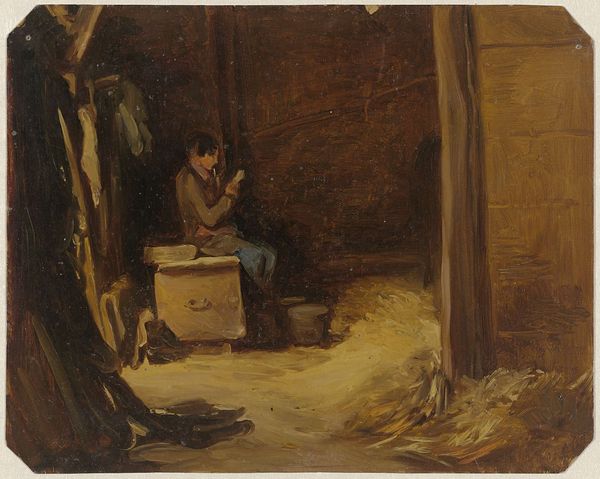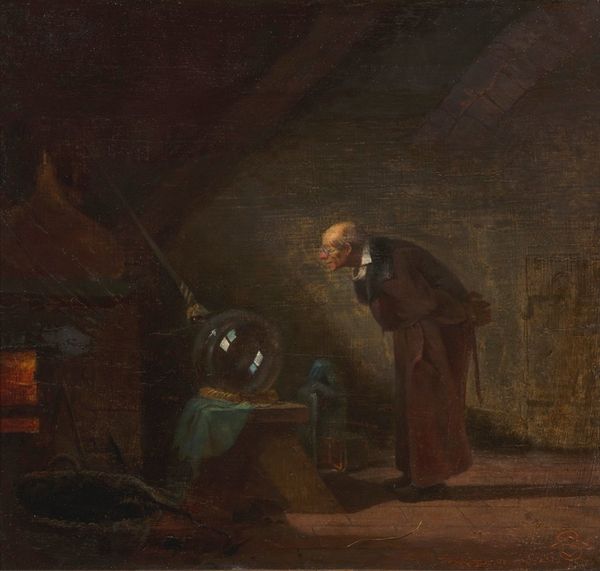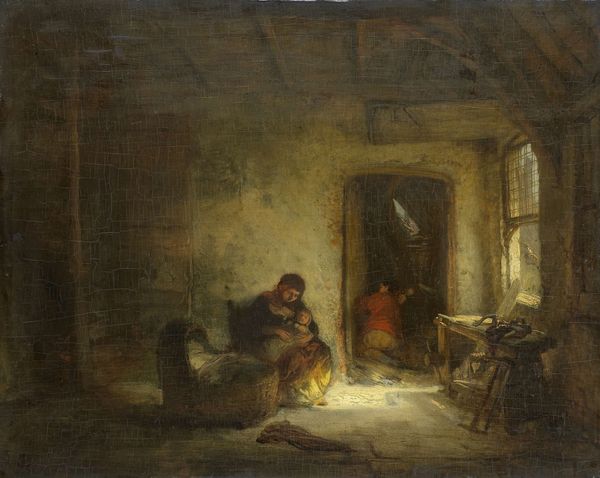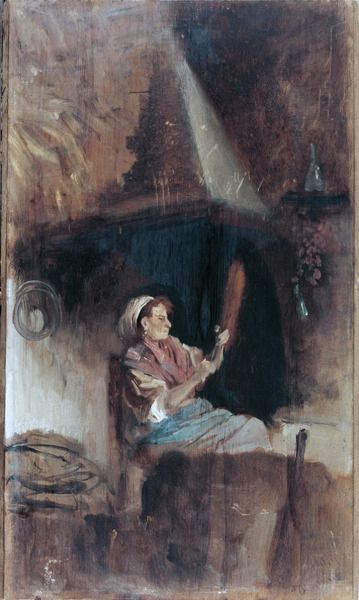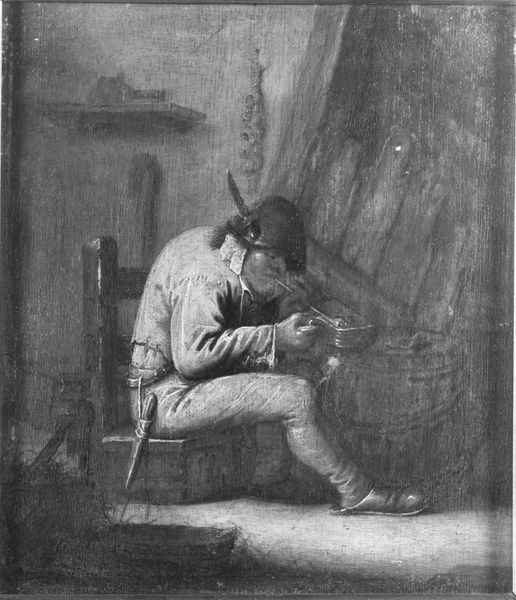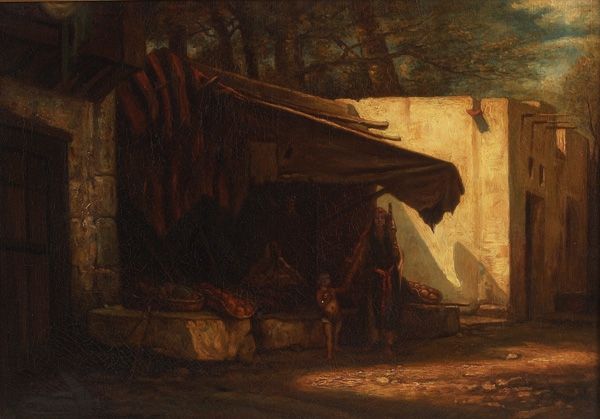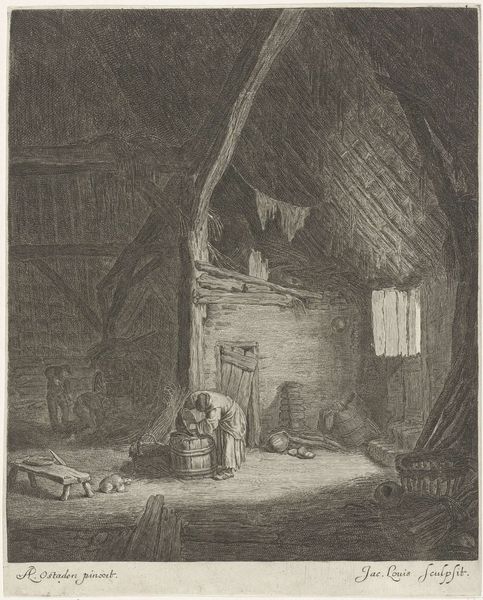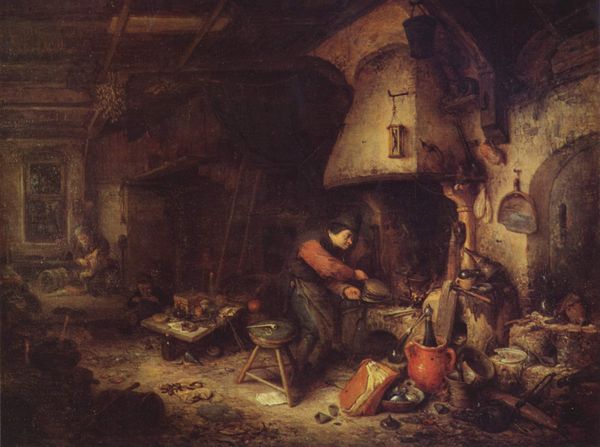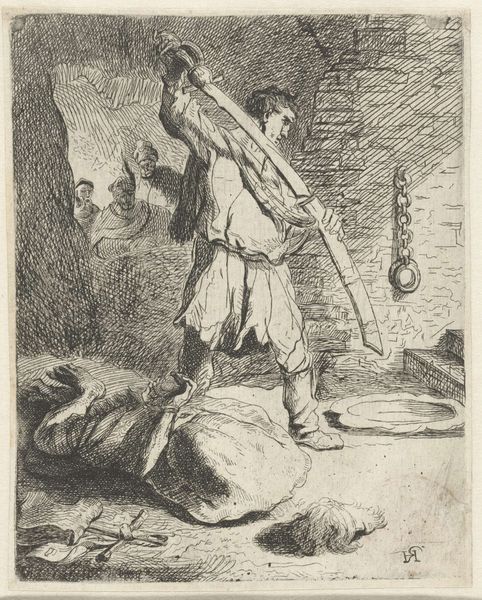
oil-paint
#
portrait
#
figurative
#
oil-paint
#
charcoal drawing
#
figuration
#
oil painting
#
romanticism
#
painterly
#
genre-painting
#
watercolor
Copyright: Public Domain: Artvee
Curator: Thomas Sully's oil painting, "In His Cave," presents an intriguing interior scene. What's your first impression? Editor: Gloomy. There’s this intense chiaroscuro that emphasizes the stark realities of what appears to be an isolated existence, underscored by the ambiguous tension in the figure's posture as he’s seemingly readying a rifle. The composition just breathes vulnerability. Curator: That tension seems deliberate. Considering Sully's romanticist tendencies, it is interesting to view the piece through a lens of social awareness—acknowledging the context surrounding depictions of figures engaged in labor. How the artist processes materials is itself a form of narrative, subtly portraying class or gender associations tied to labor. Editor: Exactly! By framing him within the cave, Sully is deliberately situating this individual within specific power dynamics. The objects themselves, the rifle, the darkened corner, imply that it is not just about labor, but the larger themes of survival and maybe even resistance against external threats to his own survival in this setting. Curator: Absolutely. Looking closer at Sully’s application of oil paint, the rapid brushstrokes bring out a palpable sense of urgency—emphasizing a workingman’s environment with visible evidence of work processes through objects that imply craftsmanship and sheer physical work. Even the dim lighting seems meticulously chosen, a way to hint that labor occurs in all conditions. Editor: And isn’t it striking how this Romantic vision seems to challenge classical heroism? Instead of the idealized warrior, we confront this figure inside of a small personal space, readying a rifle. It disrupts any conventional glorification by exposing the daily reality that often underscores what someone may be compelled to do for the purpose of basic survival. It makes one question what "freedom" truly means in circumstances of hardship and the daily acts needed to simply endure. Curator: In conclusion, Sully encourages us to delve below what’s represented through narrative while drawing attention towards art production as labor. By acknowledging class dynamics in an art object we confront both form and ideological concerns about artwork interpretation methods through broader society interactions, and cultural narratives presented visually through labor's aesthetics. Editor: Agreed. And through such analysis we recognize that romantic depictions hold layered meanings when explored through modern sociopolitical contexts—transforming perceptions of individuals depicted amidst struggles to endure circumstances beyond beauty as something also carrying intrinsic, revolutionary value in challenging conventions through artistic means within art historical dialogues today.
Comments
No comments
Be the first to comment and join the conversation on the ultimate creative platform.
